Holistics Data Modeling, Explained
Holistics's data modeling layer allows data teams to radically increase their productivity. No repeated queries. Self-serve reports and dashboards. Here's how it works.
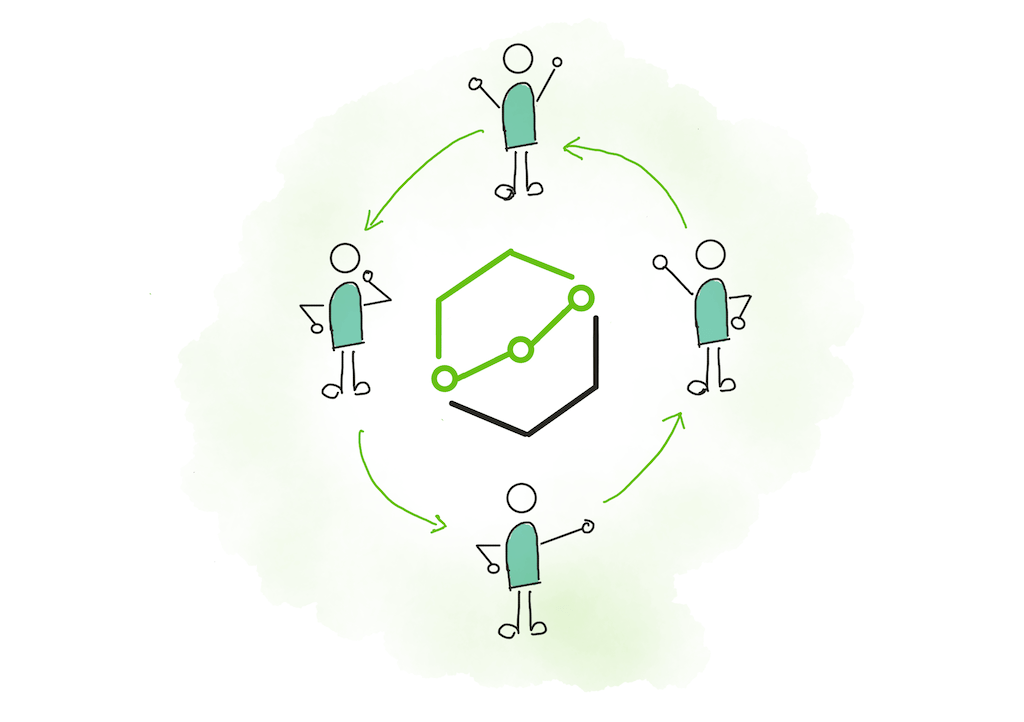
Data modeling is an essential part of the Holistics platform. We've found that teams who model their data as part of their business intelligence workflows are able to substantially increase team output.
However, data modeling is still irregularly used amongst our newer users.
This article seeks to address this gap. By the end of this piece, you will understand what data modeling is, why it is beneficial to your business intelligence team, and how you can use Holistics data modeling to greatly accelerate your team's productivity.
Table of Contents
What is Data Modeling
Data modeling is the process of using business logic to transform raw data, in order to produce 'modelled' data that is simpler for querying.[1]
For example, let's say that your boss wants to know the amount of revenue generated by active users. Your raw data is split between two tables: you have user activity stored in a user_activity table, and revenue information stored in a user_information table.
The simplest way to generate this answer is to write a JOIN query that aggregates the numbers from the two tables. You may then give this answer to your boss.
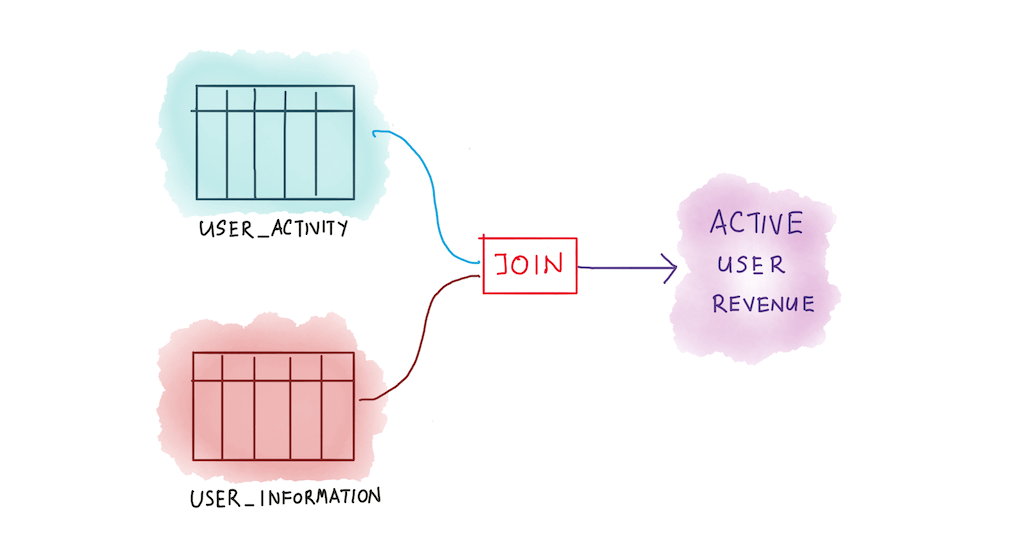
The data modeling approach is to transform these two tables into a representation that is easy to query in the future.
For instance, you could create a data model called revenue_data that contains all the information your boss might ever need to know about user revenue.
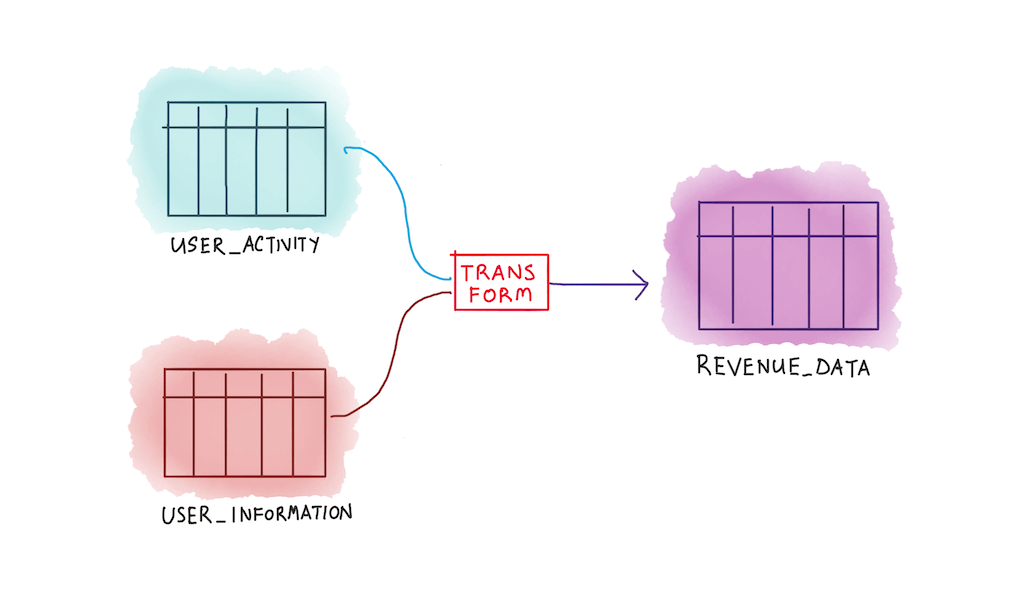
This representation is easier to work with, because it reflects the actual business logic that your company uses in decision making.
Data Modeling in Holistics
Holistics takes this idea and runs with it.
In Holistics, a data model is an abstract layer that lives above your data.
It's easiest to think of this like you would a materialised view in a database. Like materialised views, you may add or remove fields to a data model from the underlying database tables. You may also define new calculated or aggregated fields that better represent your business's metrics.
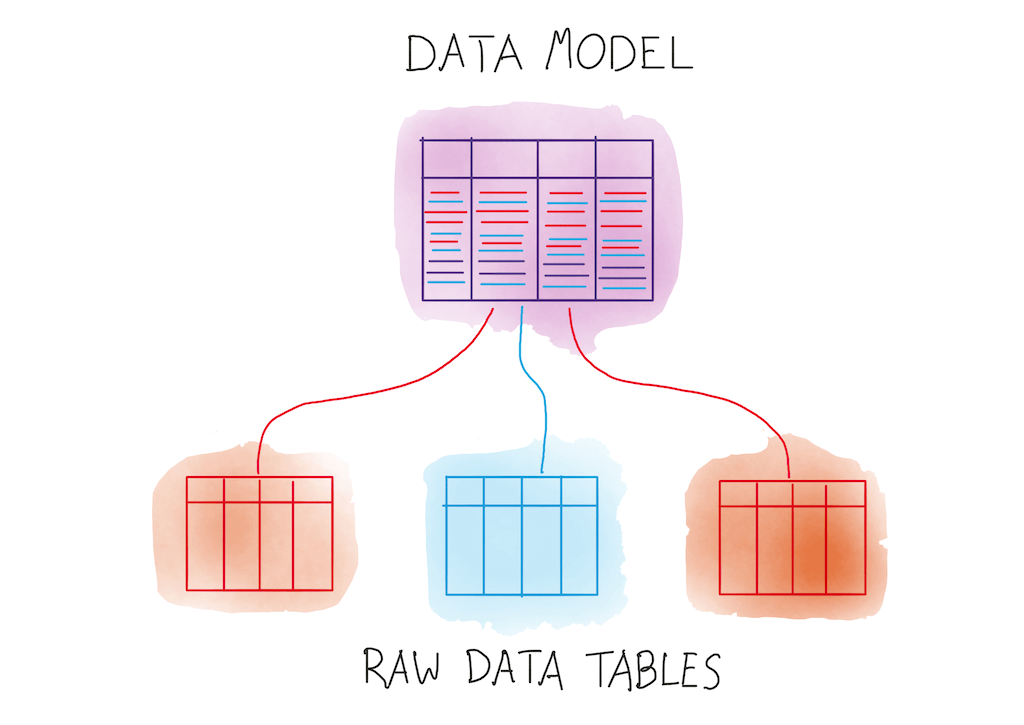
This approach to analytics comes with some very powerful benefits.
For starters, every data model created in Holistics is a shareable resource. Other analysts in your organisation may use the calculated fields in your models to create new models, or use your models to define relationships with other models.
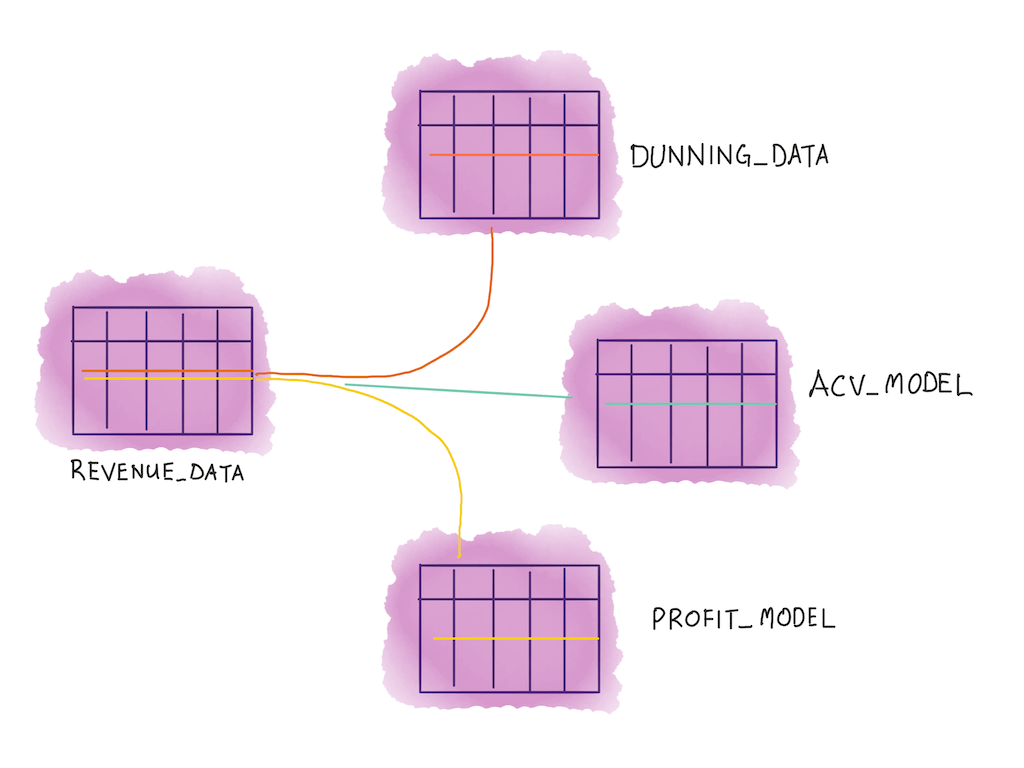
This increases your team's productivity, encourages reuse of existing data, and reduces the risk of mistakes.
To increase the usability of data models, Holistics lets you edit and annotate your models.

This enables your analysts to capture and share contextual knowledge that might otherwise be lost.
Second, Holistics data models are explorable when presented as part of a dataset. Think of a dataset as a 'mini datamart'. A single dataset consists of multiple data models.

Datasets are meant to be accessible to business users. Instead of only generating reports for each business question, analysts may also construct datasets and give them to business users to explore.
Holistics's drag-and-drop UI makes it trivially easy for business users to generate new reports from such datasets. Because business users are able to help themselves, each data analyst becomes more productive, and will be able to service a larger number of business users than before.
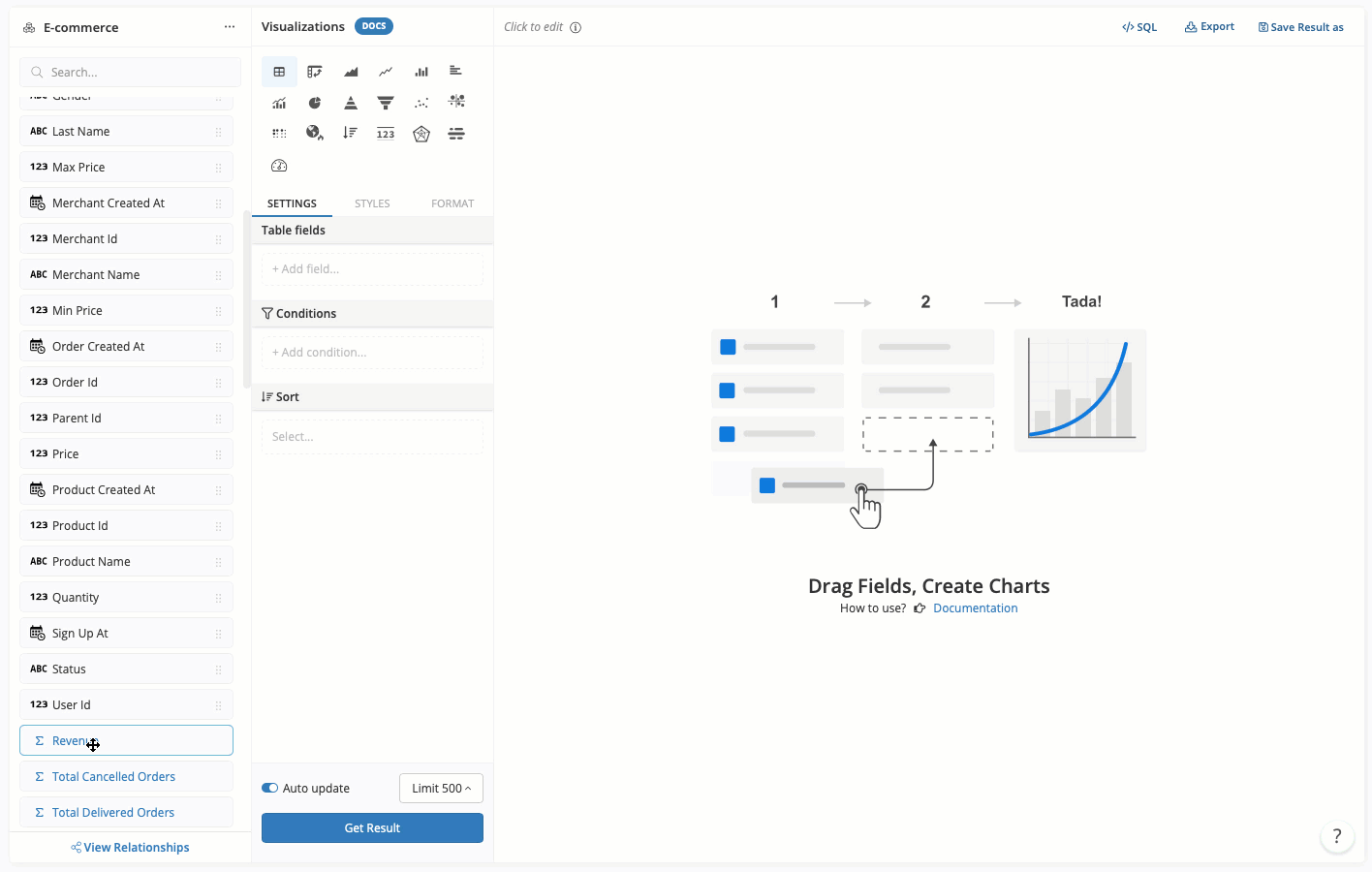
Finally, reports generated from a data model in Holistics are immediately updated if the underlying model is updated.
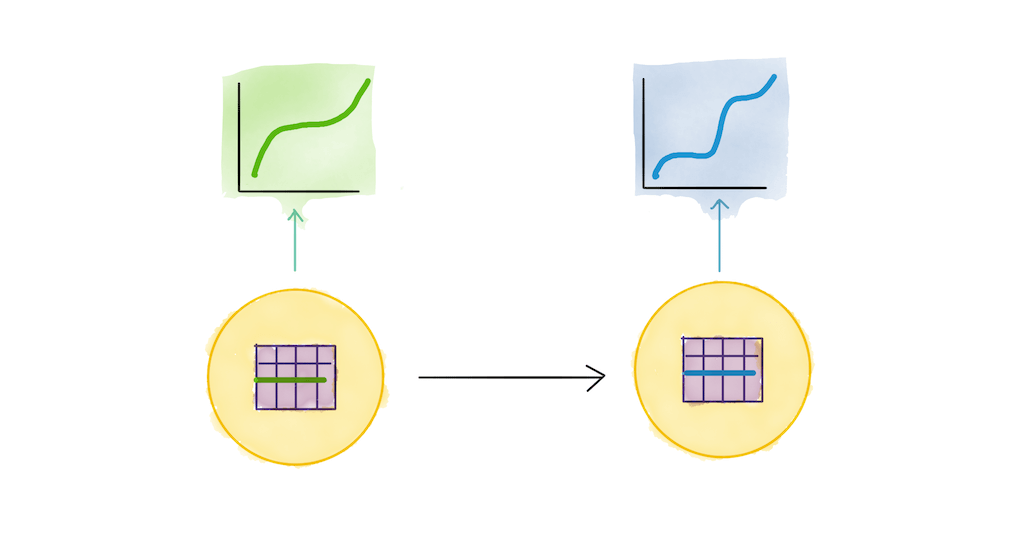
This makes it radically easy to update reports as the business logic changes — simply update the model, and every upstream report updates with it.
Conclusion
Data modeling is a powerful way to increase the productivity of your team. Instead of writing single queries, create data models instead. Your ability to scale up your data team's operations should radically increase when you do.
If you'd like to learn more, read our documentation for data models here. If you'd like to see how this works in practice, you may watch a video demonstrating data models below.
Footnotes
[1] Pedantic note: we're actually talking about semantic data modeling in this piece. There are many types of data modeling; semantic data modeling is merely one of them. However, in the context of Holistics, when we say 'data modeling' we mean only semantic data modeling. ↩︎
What's happening in the BI world?
Join 30k+ people to get insights from BI practitioners around the globe. In your inbox. Every week. Learn more
No spam, ever. We respect your email privacy. Unsubscribe anytime.

